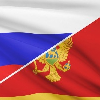Montenegro`s industry: decline and fluctuations
This is an automatic translation.
Click here to read the publication in the original language.
Montenegro's industry: decline and fluctuations
In Montenegro, according to official statistics, almost 60 types of products are produced. Basically, these are products of the food industry, but there are also production of ball bearings, explosives, drugs, footwear, clothing, mining of non-metallic minerals and so on.Manufacturing industry of Montenegro is experiencing a long period of decline from the 90's. XX century. The consequences of the disintegration of Yugoslavia - wars, sanctions, the destruction of economic ties, the lack of a focused policy in this sphere - led to a change in the structure of the country's economy, services prevail over all other spheres of the economy.
The downward trend in the manufacturing indices is steady, although from 2000 to 2008 the manufacturing industry progressed, but the share of industrial production in the runway of Montenegro was steadily declining. In 2000, this is 19%, in 2012 it is already 10.8%. In 2012, the production volume was only 65% of the 2000 level. In 2009, the production sector experienced another wreck, see diagram number 1.
It is interesting that after the crisis against the background of attenuation in all branches of production, the output of vehicles, machinery and equipment, chemical products and fibers grew at double-digit rates. Since the volume of output of these goods is small, they do not influence the overall statistics.
After 2009, the industry of Montenegro is feverish: in 2011 it grew by 17.5% at once to 2010, then (2012) fell 11% by 2011, then (2013) jumped by 10%. Such jumps cause suspicion that the industry in the country, firstly, is very weak, but it does not matter; and secondly - develops (developed) on its own, and this is already a disaster. Entire industries and sub-sectors disappeared in Montenegro, the production base was collapsing, in general, what was called degradation occurred and is happening. In 2014, the production did not improve and the production in Montenegro fell by 12% compared to the figures for 2013.
Of course, there may be a question, why does Montenegro need industry in general? Then, as we have already pointed out in previous publications, the strategic goal of the country's development is a steady increase in the standard of living of the population. Only at the expense of tourism and real estate this can not be achieved, more precisely, has not already been achieved. The described processes are indicative: complete freedom of development of tourism to prosperity does not lead to the club of developed countries does not give a pass, the standard of living of the population does not radically increase.
Developing industry provides employment, productivity growth, exports and leads to an improvement in living standards. The more the growth rate of industrial production, the higher the economic growth, the better the prospects for the economy. Industry draws for itself education, social guarantees, investments and so on. In the modern world, who lags behind in industry, he lags behind in everything. There are many examples - the entire post-Soviet space as an example of a negative and China, as an example of a positive (so far positive). There are examples both closer and smaller in size, of course.
In the current year, fluctuations in the production of Montenegro continued. According to official statistics, according to the results of the period from January to August, the indices of industry grew by 11%, manufacturing production, in particular, by 18%. The dynamics of the months of the year to the same period of the previous year (APPG) is even more extreme. We look at the diagram number 2.
In general, sooner or later, but the goals declared by the government of Montenegro, plus the desire in the EU, inevitably led to an understanding of the need for industrial development.
Currently, there are two policy documents in the industry: "Montenegro's manufacturing development strategy in 2014 - 2018", which was presented at the end of 2013. And "Industrial policy of Montenegro until 2020", public hearings on which ended last week. The latter is more specialized, it has more specifics, so it is more interesting.
To be continued
Sources:
http://www.monstat.org/
http://www.privrednakomora.me/
http://www.mek.gov.me/
Evgeny Novozhilov
#EvgenyNovozhilov
This is an automatic translation.
Click here to read the publication in the original language.






































